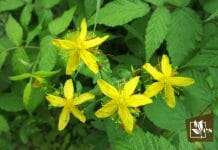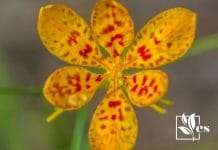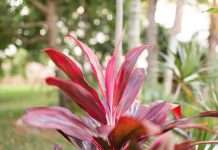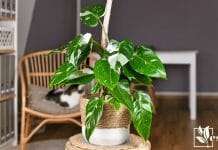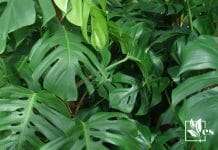- When to Plant Corn in San Diego: Optimal Seasons and Tips - July 19, 2024
- When to Plant Hydrangeas in Illinois: Best Timing for Optimal Growth - July 19, 2024
- Why Are My Radishes Growing Above Ground: Uncovering the Causes - July 19, 2024
Blackberry companion plants provide different benefits to blackberries. The most suitable companion plants for Blackberry Bushes are the ones that are pest repelling, increase pollination, and don’t compete with them for Nitrogen in the soil.
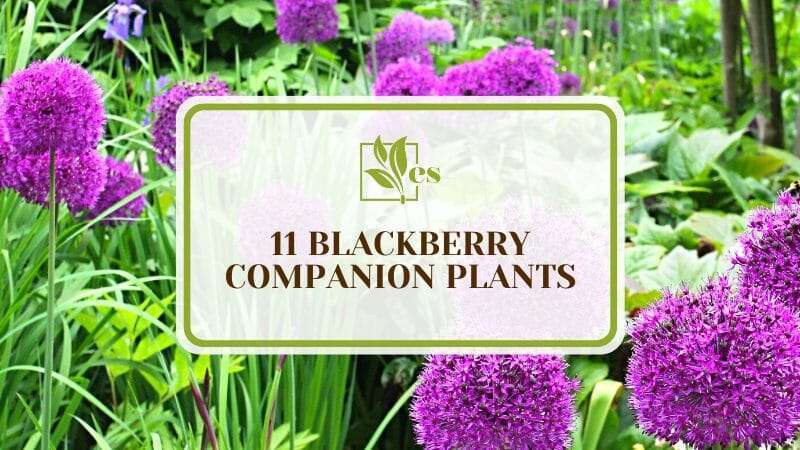
Some of these companion plants include; Alliums, fruit trees, wildflowers, and some berry plants. Let’s take a closer look at the perfect companions for the blackberry plant.
“Planting companion plants close by can enhance growth and yield.”University of Rhode Island Green Share Fact Sheets
JUMP TO TOPIC
A List of Blackberry Companion Plants
1. Blueberries
Blueberries are perennials that are native to North America. There’s the low Bush variety and the high bush variety. Both types produce small edible blue and sometimes purple berries that consumers widely love and eat. There are a few plants that look like blueberries, but they do not have the same companion plants.
– Benefits
Blueberries are one of the most suitable blackberry companion plants. They attract beneficial insects such as bees and wasps, which are good for Blackberry Bushes. Also, you can grow blackberries with blueberries because they don’t compete with them.
Besides the juicy fruits they produce, blueberry plants also add to the beauty of your landscape with their brightly colored leaves and flowers.
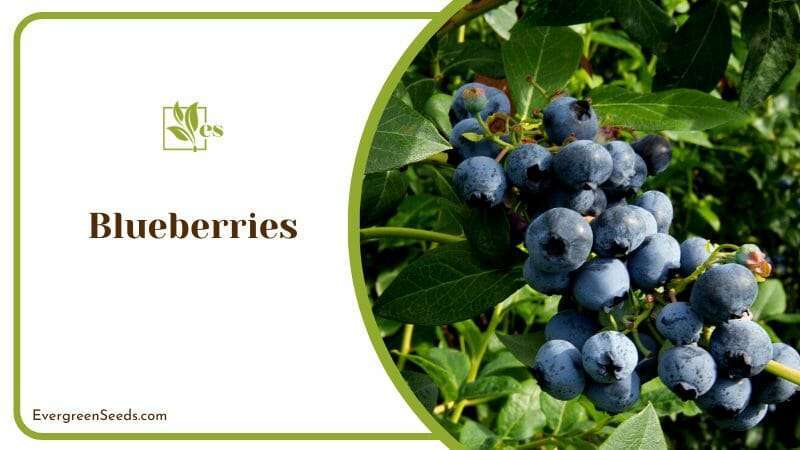
– The Best Time to Plant
The best time to plant blueberries is spring or late fall, especially in warmer regions, because this is the right season for them to bloom. However, note that in cooler areas, it’s ideal to grow blueberries between the first and second week of spring.
– Growth Requirements
Blueberry plants are slow-growing plants. They may not change much in size till they reach full maturity. They’re best grown in full sun and soils with acidic pH, usually between 4.5 to 5.5.
Note that you must avoid growing them in compact soils, as they prefer loose, well-draining soils that are rich in nutrients and organic matter.
2. Hyssop
Hyssop is an evergreen shrub, indigenous to Europe and the Middle East, scientifically it is called Hyssopus Offisinalis.
– Benefits
It is mostly grown for its fragrant foliage and flowers. The leaves and flowers of the plant may have been used for culinary and medical purposes in the past.
Hyssop is a great companion plant to pair with blackberries. It requires very little maintenance and has some added benefits. One such benefits include its ability to draw pollinators to itself. Its brightly colored blooms attract insects for instance bees and wasps, which can also be beneficial to blackberry plants.
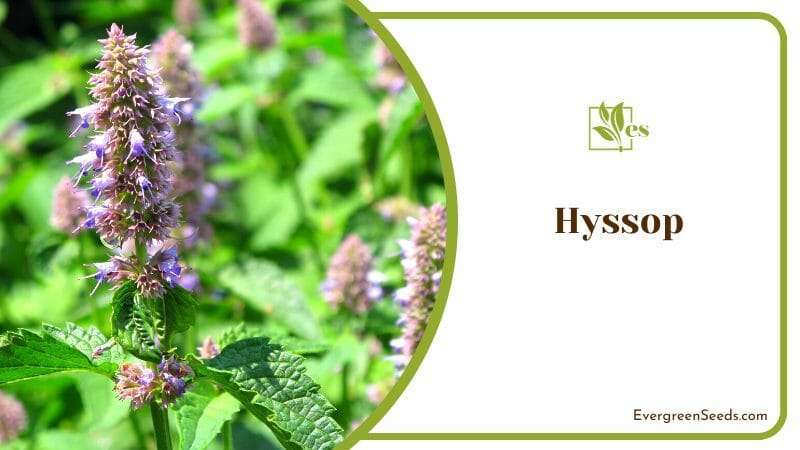
– Best Season to Grow
Hyssop does well in hardiness zones three to nine. They stun in the summer with fresh blossoms of pink, red, violet, or white hues. It’s best to plant them in early spring to get a full, lush cover for your garden.
– Growth Requirements
Hyssop sprouts very quickly, to elaborate further, they take only about 21 days to sprout and can grow as tall as 24 inches in height. The plants grow well in full sun and sometimes in partial shade. However, prolonged growth in partial shade can cause them to become thin and stunted.
3. Mint
Mint is a hardy perennial plant that is indigenous to North America. The fragrant leaves of this plant have many important uses in aromatherapy and food preparation.
– Characteristics
Mint plants have a root system that spreads at the soil’s surface. As a result, most gardeners grow them in pots to prevent the plants’ roots from spreading, as this is one of its key characteristics. In addition, the mint plants can grow up to 18 inches in height.
– Benefits
Planting blackberries and mint together makes total sense because they have similar growth requirements. Also, most mint varieties repel pests like aphids and attract pollinators, which are beneficial to blackberries.
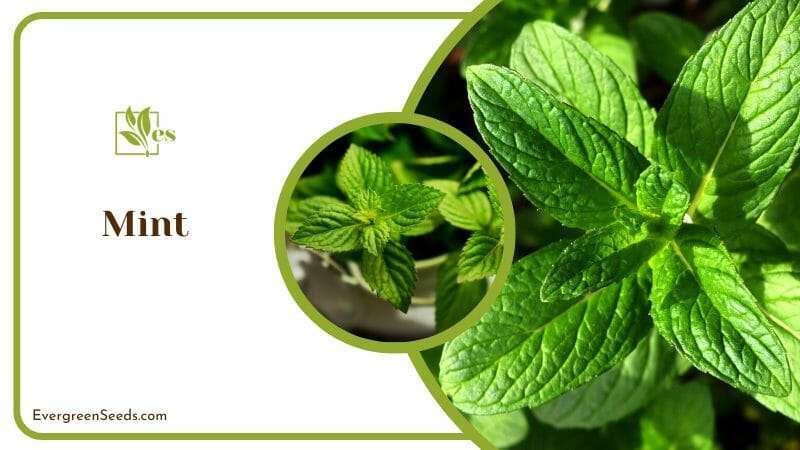
Most mint varieties are toxic to animals, including pets like dogs and cats. Generally, if you have pets, keeping them well away from the plants is important. However, mints can be eaten by insects so make sure to keep them safe.
– The Best Time to Plant
Spring is the best time to plant mint, right after there’s no more frost, as the plants bloom all summer. However, depending on the species, they grow well in hardiness zones three to 11.
– Growth Requirements
Mint plants grow well in partial shade. They are hardy plants and can survive the full sun. However, they would need to be watered regularly. The type of soil you grow mints in is very important as it can determine the overall outcome of your plant.
Although mint may grow in various soil types, it thrives in rich soils with pH ranges between 6.0 to 7.0. Using soil with good drainage is also crucial, as flooded soils can cause their roots to decay.
What you must note is that mint plants love water. When temperatures rise and the weather becomes dry, water your plants and remember to keep the soil slightly damp but not soggy.
4. Thyme
Thyme is an evergreen herb, and it is scientifically called the Thymus Vulgaris that grows so much and so well in the Middle Eastern Regions.
– Characteristics
It is a hardy perennial that can survive in the most difficult conditions. Thyme, which originated in the Mediterranean region, is drought-tolerant and does not require a lot of water to flourish.
Note that they are perfect for companion planting with blackberries because they attract pollinators, which blackberries can benefit from. However, keep in mind that most thyme plants are grown as herbs for their leaves, and they are great in keeping unwanted pests away with their strong clove-like smell.
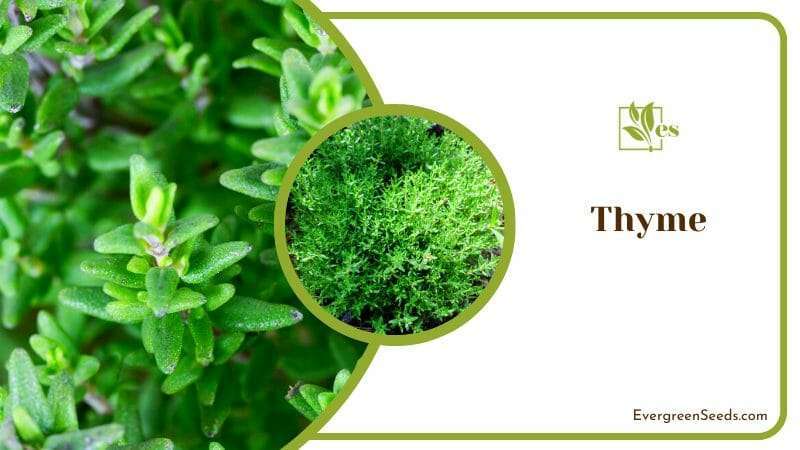
– Growing Season
Like the previously mentioned blackberry companion plants, thyme is best planted anytime between March and June. The plants are evergreen. Thyme leaves can be harvested all year round. However, the ideal time to harvest thyme leaves is during summer, when the plant is most fruitful.
– Growth Requirements
Thyme enjoys heat and does well in direct sunlight, it will thrive and grow more. In addition, you must avoid planting thyme in shaded areas to get the best of the herb. If you wish to grow them indoors, you should plant them by the windows, in view of direct sunlight.
Thyme is a hardy plant that thrives in almost any soil type as long as the soil drains well. However, they thrive in slightly acidic to slightly alkaline soils, usually with a pH range of 6.0 to 8.0. The plant does not require constant watering.
5. Clover
Clover, also known as trefoil, is a leguminous plant. Like most leguminous plants, they are usually planted as cover crops.
– Benefits
Cover crops enhance soil health by reducing erosion, thwarting weeds, and managing many pests and diseases. They help to improve the yield of other crops.
Clover is a great companion plant for wild blackberries and thornless blackberries. They fix Nitrogen, which is an essential nutrient for Blackberry growth, into the soil with the help of some bacteria. Also, as cover crops, they are perfect for lowering the rate of evaporation of water from the soil.
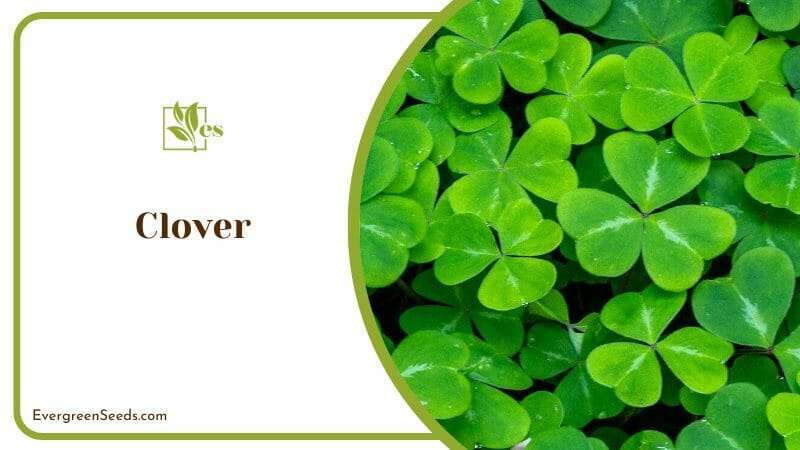
– Growing Season
Spring is the most ideal time to plant clovers, typically between April and May is when they will grow, and bloom the beautiful flowers in spring.
– Growth Requirements
Clover is drought-resistant. Once established, it can survive without water and still thrive. The ideal soil type for planting clover is clay or sandy soil with a slightly acidic to alkaline pH. Planting blackberries in clay soil with clovers will improve the overall yield of your blackberry plant.
If your soil doesn’t have the right pH for planting clovers, you can always adjust it by adding lime or peat moss to improve the alkalinity or increase the acidity, respectively.
6. Allium
There are several species of plants in the allium genus. Some of these include common vegetables like onions, chives, scallions, shallots, and leek.
– Advantages
Alliums have a pungent smell. The strong smell you get from alliums like onions is attributed to the sulfur that is naturally present in them.

Alliums are great insect and pest repellants. This alone makes them suitable companion plants for Blackberries. Of course, the fact that they don’t compete with and get in the way of their growth is great. For pest control, surround your blackberries with any allium plant, as these plants ward off aphids, mites, and other pests.
– Growing Season
The perfect time to plant Alliums is in mid to late fall. These plants grow and bloom all spring. Alliums are resilient and can withstand harsh winter weather as long as they are grown in soil that drains effectively.
– Growing Requirements
Allium plants thrive when they’re exposed to full and sometimes partial sunlight. However, they might benefit from a little shade in hotter climates. Additionally, alliums have thin rooks that normally don’t stretch beyond 12 to 18 inches. As a result, they are suitable plants to grow around blackberry bushes.
7. Purple Coneflower
Purple Coneflowers, also known as Echinacea, are wildflowers. They are members of the daisy family, with about 10 species known to man. The limited species can be found in North America.
– Features
They are mostly grown in gardens for their big, and colorful flowers.
– Benefits
Purple Coneflower blossoms are suitable plants to pair with blackberries because their blooms attract pollinators to visit. To increase the chance of the pollinators getting to your blackberries, you should plant purple Coneflowers at a distance of 25 feet or less from them.

Note that as you do this, you can be sure that whatever pollinators are visiting your purple Coneflowers will also visit your triple crown blackberries or any other blackberry varieties you have in your garden.
In addition, remember that pest populations are naturally lowered by beneficial insect feeders, including birds, that are drawn to purple Coneflowers.
– Growing Season
It’s best to plant purple Coneflowers in spring or early summer. During this period, the soil is easy to work with, and your plants can easily be established.
– Growth Requirements
Coneflowers thrive in a lot of sunlight. However, they are highly sensitive to drought conditions. They are cold and hardy and grow in various soil types as long as they’re not water-logged. It must have a soil pH of 6.5 to 7.2 to grow ideally.
These are easy to cultivate and maintain, as long as the proper growing conditions are met, they thrive and produce large yields, they aren’t very challenging.
8. Hazelnut Bush
Hazelnut bushes grow as large deciduous shrubs, it is also called the Corylus spp.
– Characteristics
These shrubs are pretty easy to grow, and they don’t take up a lot of space. The fruits the tree produces are known as filberts or hazelnuts. They produce edible nuts, which are a favorite for most people and animals. There are several varieties of the Hazelnut plant, most of which are good companion plants for Blackberries.
– Features
The normal height of Hazelnut trees varies from eight to 15 inches, depending on the variety. As a result, they are never at risk of being shaded by blueberry plants. Also, they offer some shade as well as organic mulch for blackberries.

Hazelnut trees produce eye-catching yellow seedpods during spring, which later grow into huge nuts during summer or fall. They are the perfect decorative companion plants to have in your garden during fall, when the leaves add beautiful pops of color to the landscape, and this is one of the reasons why they are planted, because they add great color.
– Best Time to Plant
As long as the ground is workable and not frozen, Hazelnuts can be planted during the dormant period of winter. Most hazelnut young lings are gotten as bare root plants and as a result, should be planted in the late fall to early spring seasons, as they will thrive.
– Growth Requirements
Hazelnuts grow well in full view of the sun in moist, well-draining soils. They grow best in soils with slightly acidic to neutral pH, which is usually between 5.5 and 7.5. While older Hazelnut trees can withstand drought, young shrubs require constant moisture.
9. Tansy
Tansy is a hardy perennial flowering plant, commonly known as bitter button, cow bitter, or golden button. It is indigenous to Europe and Asia. However, it can now be found in places like North America. Tansy gets its “button” name from its button-like flower heads.
– Benefits
Tansy’s, like other angiosperms, are excellent at luring pollinators like bees and wasps to themselves. Planting them with blackberries can boost fruit production while reducing fruit drop. They are also great at repelling harmful insects and pests.

It is important to note that Tansy has been labeled an Invasive species in so many places. As a result, if you choose to plant blackberries with tansy, you should consider growing them in containers to contain their spread.
– Growing Seasons
Tansy plants are best grown in the fall. However, if you want to start them early, you can plant them indoors during spring.
– Growth Requirements
Note that this plant would require well-draining, nutrient-rich soils, water shouldn’t accumulate at the bottom or else it will be a bit problematic. They grow well when exposed to full sunlight. However, they may sometimes need light shade.
10. Borage Herb
Borage is another great plant to pair with blackberries, another name given to them would be Borago Officinalis. It is an annual herb naturally distributed across the Mediterranean region.
– Benefits
Borage, also known as starflower or bugloss, is usually cultivated in gardens for its edible leaves and seeds. Except for the roots, every part of the plant has a distinct flavor and can be used in food or medicine.

– Features
Borage herbs can grow as tall as two feet. The plant produces spectacular blossoms which may be blue, pink, or white. The blooms attract pollinators like butterflies and bees to themselves and surrounding plants.
– Growing Season
Borage typically blossoms all summer through fall as they persist the heat. Hence, the best time to plant borage is between mid-spring and late spring. Avoid transplanting Borage seedlings at all costs, because the plants do very poorly during the process. It’s best to plant them exactly where you want them to grow.
11. Meadow Crane’s-bill
Meadow Crane’s-bill is a flowering perennial with fuzzy stems and violet flowers in the shape of saucers. The Crane’s-bill is indigenous to Asia and Europe.
– Characteristics
The flowers of these plants beautify gardens and attract beneficial insects like butterflies to them. Geranium pratense is easy to grow and care for. They’re not fussy plants, and they can be planted as companion plants for raspberries and blackberries.

– Growing Seasons
Geranium pratense is best grown in spring or early fall. They bloom all through summer.
– Growth Requirements
These plants don’t need much. All you need to pay attention to is the soil type, pH, and moisture content to make the plant grow well. The plant is quite resilient and can withstand very cold temperatures.
References
- Mark Longstroth. (December 17, 2012). Soil test before you plant blueberries. Michigan State University Extension.
Retrieved from https://www.canr.msu.edu/news/soil_test_before_you_plant_blueberries - Hyssop – Uses, Side Effects, and More. Webmd.
Retrieved from https://www.webmd.com/vitamins/ai/ingredientmono-258/hyssop#:~:text=Hyssop%20is%20a%20flowering%20plant,evidence%20to%20support%20these%20uses. - hyssop. Britannica.
Retrieved from https://www.britannica.com/plant/hyssop - Companion Planting. Cornell Cooperative Extension.
Retrieved from https://web.archive.org/web/20140221224847/http://www.ccechemung.org/wp-content/uploads/2013/09/companion-planting.pdf


